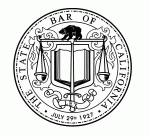California has a regulatory system for California wine labels that is designed to give purchasers a substantial amount of data about a labeled wine. Knowledge of these regulations offers a wine purchaser information that is not clearly apparent from reading the label.
Wine names fall into three categories: Varietal, referring to the type of grape used, such as Chardonnay or Cabernet Sauvignon; Generic, referring to types of wines that have come to have a secondary meaning in California, such as Chablis or Burgundy; and Proprietary names, coined by wineries for specific wines, such as Beringer ” Alluvium™ ” or Quady ” Essencia™ “.
If a California wine label identifies the product as a varietal wine, 75% of the wine must be made from the named grape variety. There are no restrictions on the types of grapes used in wines with generic or proprietary names.
In order to bear a vintage date, such as “2008,” 95% or more of the grapes used in making the wine must be harvested in the year stated. The other 5% may be from other vintages used to top off wines in barrels.
Statements of geographical origin are also subject to regulation. To be designated as a “California” wine, 100% of the grapes used in the wine must be grown in that state. To bear a viticultural area designation such as “Napa,” “Sonoma,” or “El Dorado County,” 85% or more of the grapes used must be grown in the designated area.
The winery production and bottling designation on a wine label can tell a lot to an educated consumer. “Estate Bottled” and “Grown, Produced and Bottled by …” each mean that 100% of the grapes used must be from a vineyard that is owned or controlled within a viticultural area where the winery is located. These designations by a respected winemaker often denote a higher quality wine, since the entire product was produced by that winemaker.
“Produced and Bottled by . . .” designates that the bottler made, fermented and finished at least 75% of the wine. “Made and Bottled by . . .” means that the bottler made, fermented and finished at least 10% of the wine. Again, the extent to which a winemaker participated in the production of the wine often can be an indicator of quality.
“Cellared and Bottled by . . .” or “Vinted and Bottled by . . .” means that the bottler made less than 10% of the wine and possibly did not make any of the wine. This designation often refers to wines bought in bulk from other wineries and bottled under the label of a winery that had no involvement in the production of the wine.
Knowledge of the foregoing labeling regulations can give a consumer more information and a better understanding of a given wine. However, this is just a beginning. Not all “Estate Bottled” wines are great and some “Vinted and Bottled by . . .” wines are outstanding.
While knowledge of these designations is useful, an informed consumer should also look for wines that have won medals in state and county fairs and other wine competitions and wines that have been praised or highly rated by critics such as Robert Parker and Jerry Mead or by wine publications like the Wine Spectator, Connoisseurs’ Guide to California Wines and California Grapevine. Such wines are generally notable and worth acquiring.




